International links in CCFS
BACKGROUND
CCFS’ International links provide leverage of intellectual and financial resources on a global scale, and an international network for postgraduate experience. International Partners provide the core of such collaborations. Other international activity includes funded projects and substantial collaborative programs with major exchange-visit programs in France, Norway, Germany, United Kingdom, New Zealand, Canada, USA, Taiwan, Italy, Spain, South Africa, South America, China, Brazil, Mexico, Japan, Thailand and Russia.
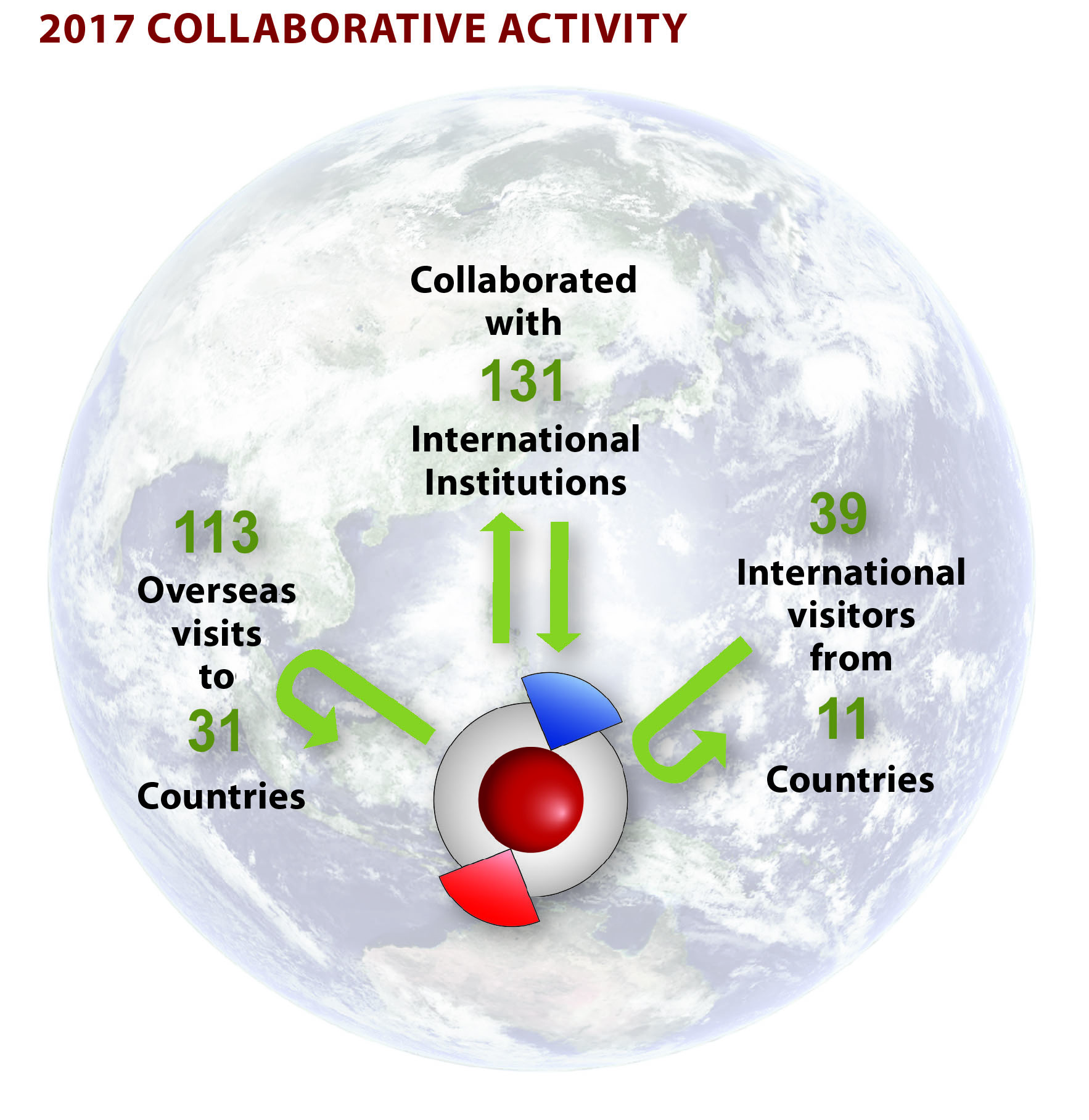
FORMAL MEMORANDA OF UNDERSTANDING (MOU)
Formal MOU between international institutions promote the Centre’s collaborative research and facilitate visits by Centre staff and postgraduates as wellas joint PhD research projects. CCFS has agreements with the following international institutions:
- China University of Geosciences (Wuhan) - 2011 (& Cotutelle)
- Constitution of the International University Consortium in Earth Science - 2012
- University of Science and Technology of China, Hefei - 2012 (& Cotutelle)
- Institute of Geology and Geophysics, China University of Geosciences (Beijing) - 2014
- Institute of Tibetan Plateau Research, CAS (Beijing) - 2014
- Helmholtz Centre Potsdam GFZ German Research Centre for Geosciences, Germany - 2015
COTUTELLE MOU
Cotutelle MOU aim to establish deep, continuing relationships with international research universities through joint research candidate supervision. CCFS has agreements with the following international institutions:
- China University of Petroleum, Beijing, China
- Durham University, United Kingdom
- Eötvös Loránd University, Hungary
- Friedrich-Alexander-University of Erlangen, Nuremberg, Germany
- Nanjing University, China
- Pierre and Marie Curie University, PARIS VI
- Peking University, China
- São Paulo University, Brazil
- Universidad de la Republica, Uruguay
- Université Montpellier 2, France
- Université Paul Sabatier, France
- University Jean Monnet, France
- University of Barcelona, Spain
- University of Zaragoza, Spain
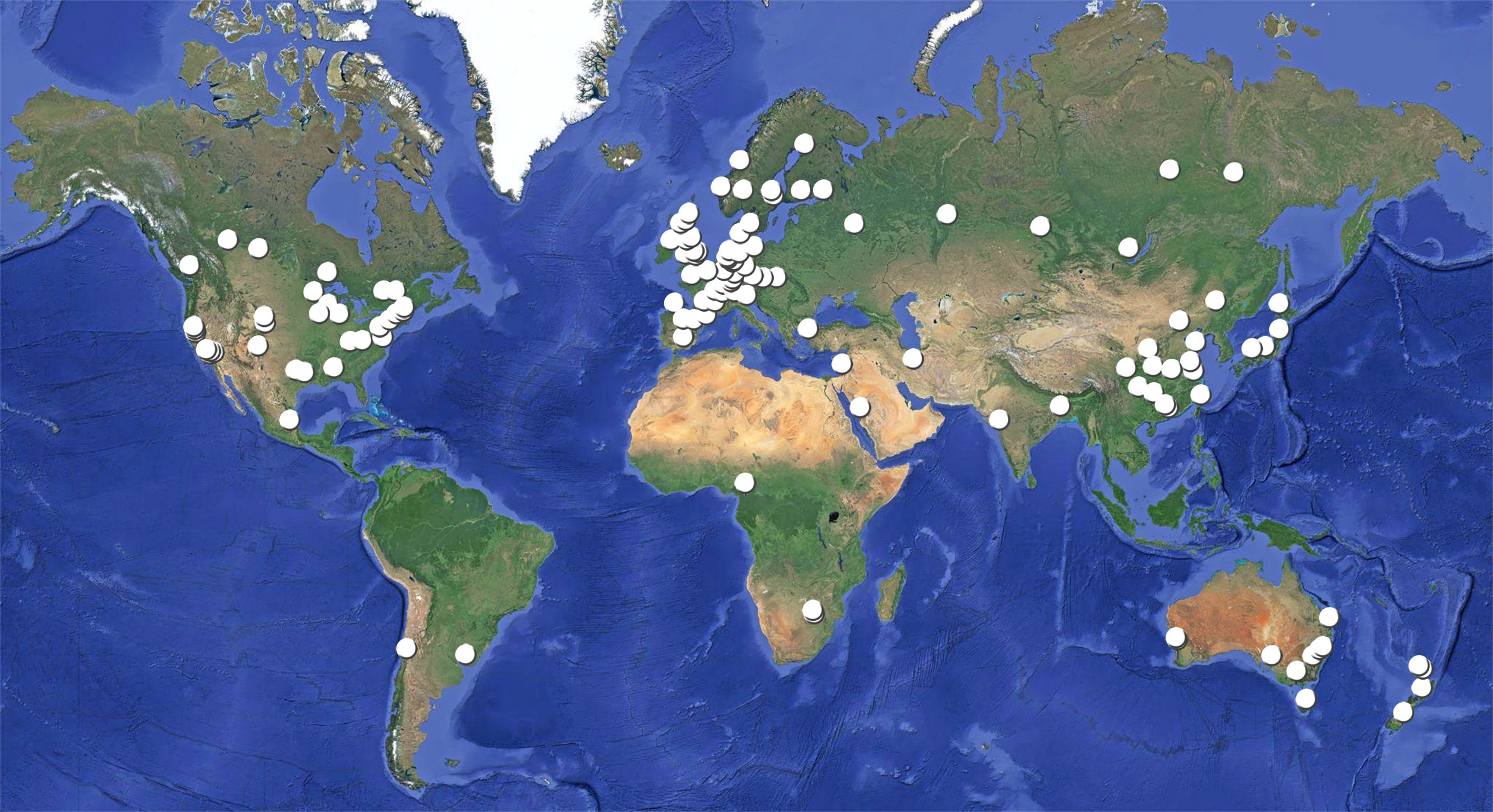
CCFS INTERNATIONAL COLLABORATIVE NETWORK
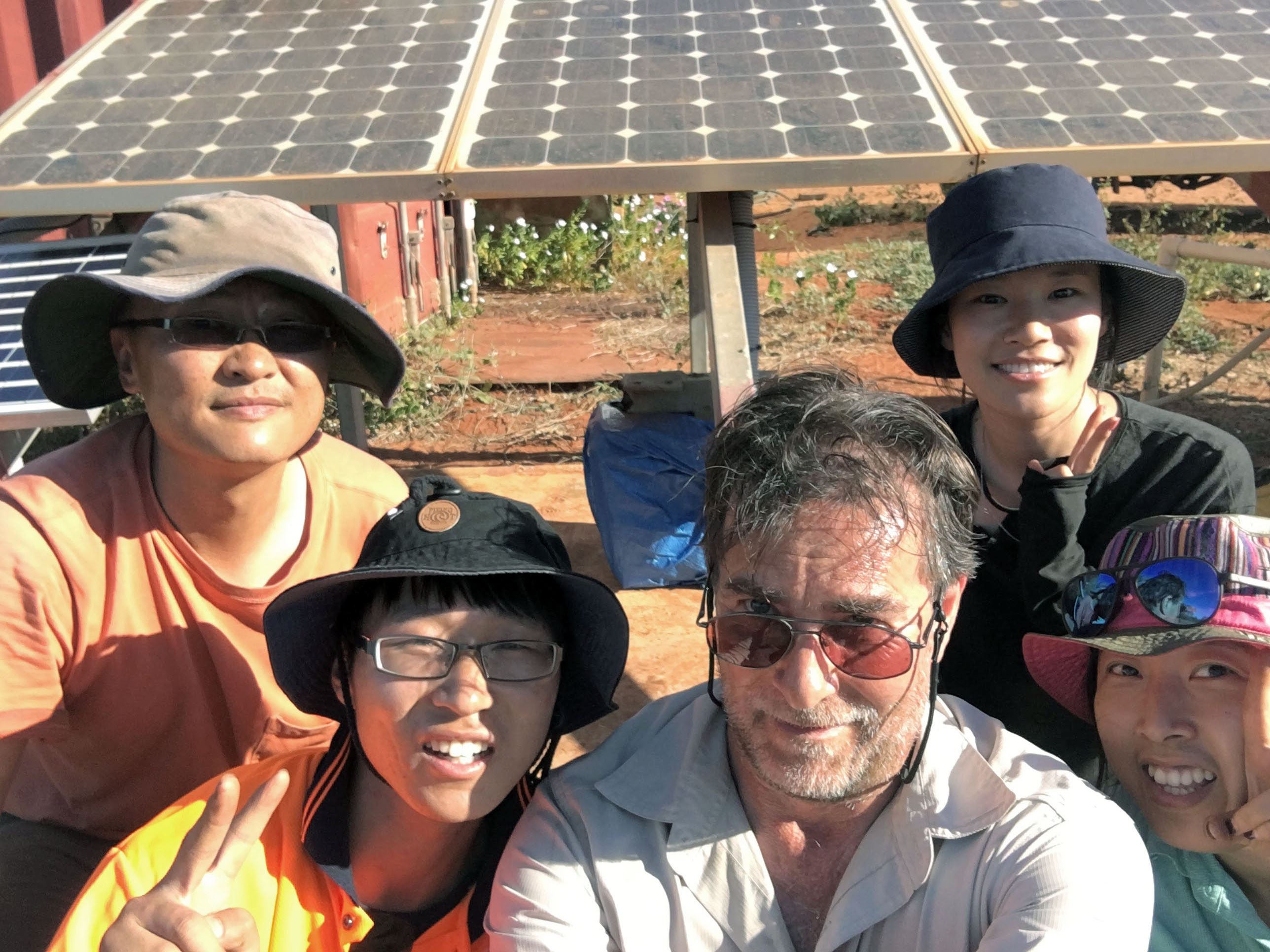
The CWAS Team at work.
INTERNATIONAL LINKS - 2017 SELECTED HIGHLIGHTS
- A collaborative project between the Institute of Geology and Geophysics, China Academy of Science, Beijing (IGG CAS), CCFS, Geoscience Australia, and ANSIR (Australian facilities for Earth sounding) has resulted in a 4-year passive seismological deployment (CANPASS) along a 900 km profile across Western Australia from Port Hedland to the southwestern border of the Kimberly Craton. The station spacing is 10-15 km, using 80 broadband seismic stations and extends beyond the continent margin using ocean-bottom seismometers.
- Dr Yongjun Lu continues collaboration with the Chinese Academy of Geological Sciences (CAGS) and China University of Geosciences in Beijing (CUGB) to investigate the porphyry copper systems in the Tibetan plateau and surrounding region.
- Delegates from a range of international institutions visited CCFS in 2017 to discuss programs including the exchange of staff, joint research activities and the exchange of students. These included representatives from China University of Geosciences Beijing (January), Shaanxi Geological Survey (May) and the East China Metallurgical Bureau of Geology and Exploration (September). Pictured left
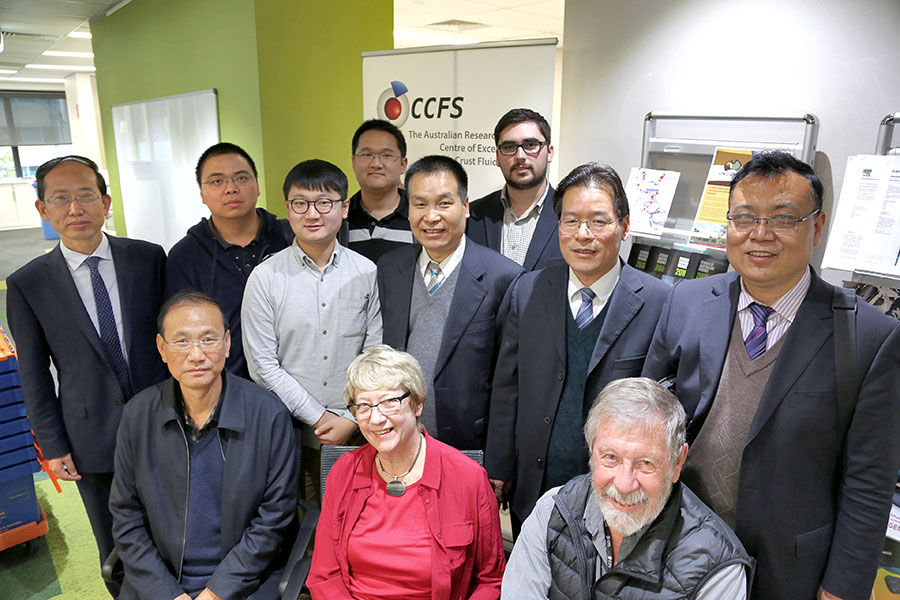
Shaanxi Geological Survey
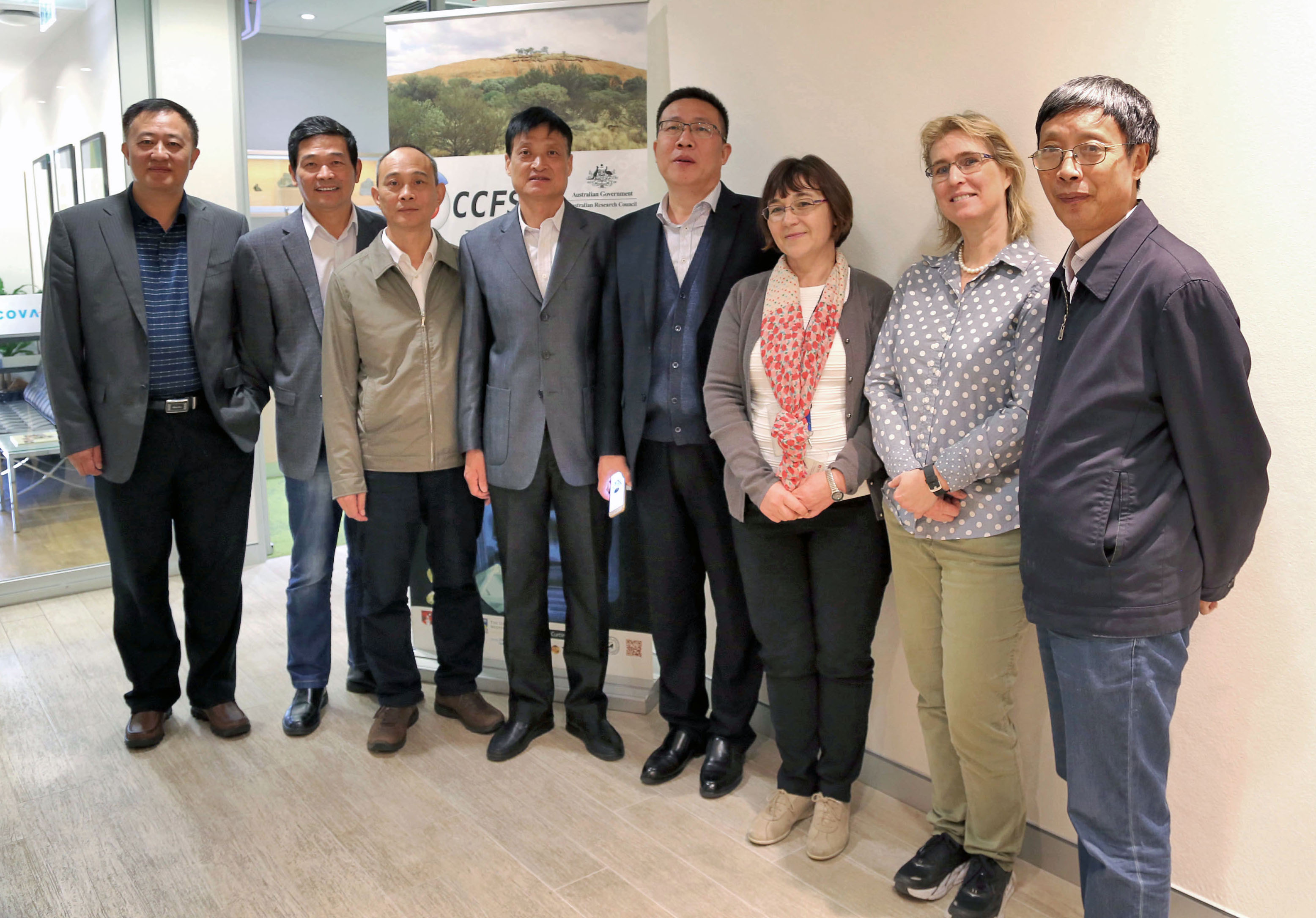
East China Metallurgical Bureau of Geology and Exploration
- A collaborative research agreement continued with the China University of Geosciences (Wuhan) with funding by the Chinese Scholarship Council (CSC). This grant provides a living allowance and travel between China and Australia for students and visiting scholars. Students and researchers funded by this project will study and work under the project’s aims, integrating geological, geochemical, geophysical and experimental techniques to study the structure, composition, geodynamics and metallogeny of the deep lithosphere and beyond.


Dr Xianquan Ping undertook 12 months of research at CCFS MQ, funded by a CSC Postdoctoral Fellowship, focusing on U-Pb and Hf isotopic analysis of zircons separated from mafic granulite xenoliths in Mesozoic-Cenozoic basalts from the North China Craton. This study revealed the presence of ancient (≥3.5 Ga) lower crust.
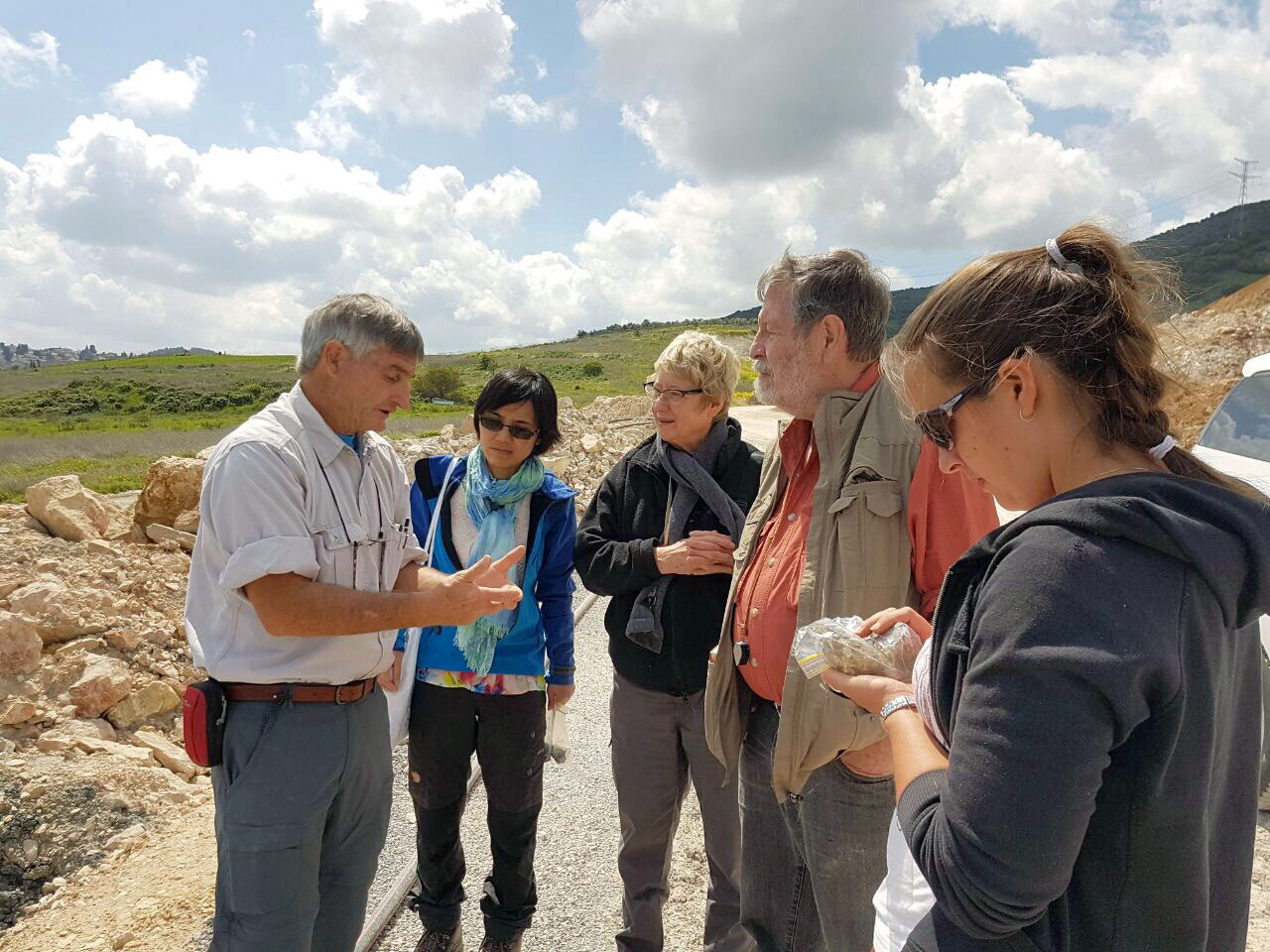
Dr John Ward, Jinxiang Huang, Sue O’Reilly, Bill Griffin and Sarah Gain in the field.
- CCFS’s very successful engagement with Shefa Yamim (A.T.M.) Ltd and their placer-gemstone exploration program in the Mt Carmel-Yizre’el Valley area of northern Israel continued in 2017 (see Research highlights Mapping the basaltic underplate: plume-related zircons from Mt Carmel, Super-reducing conditions in a modern volcanic system: key to the redox evolution of cratonic lithosphere). A group from GEMOC (Sue O’Reilly, Bill Griffin, Sarah Gain and Jinxiang Huang) visited the Shefa Yamim sample processing facility in Akko and spent time examining new finds and selecting mineral grains for further analysis. The group then traveled out to Mitzpe Ramon in the Negev Desert for the annual meeting of the Israel Geological Society, where they presented talks and posters about their recent findings.
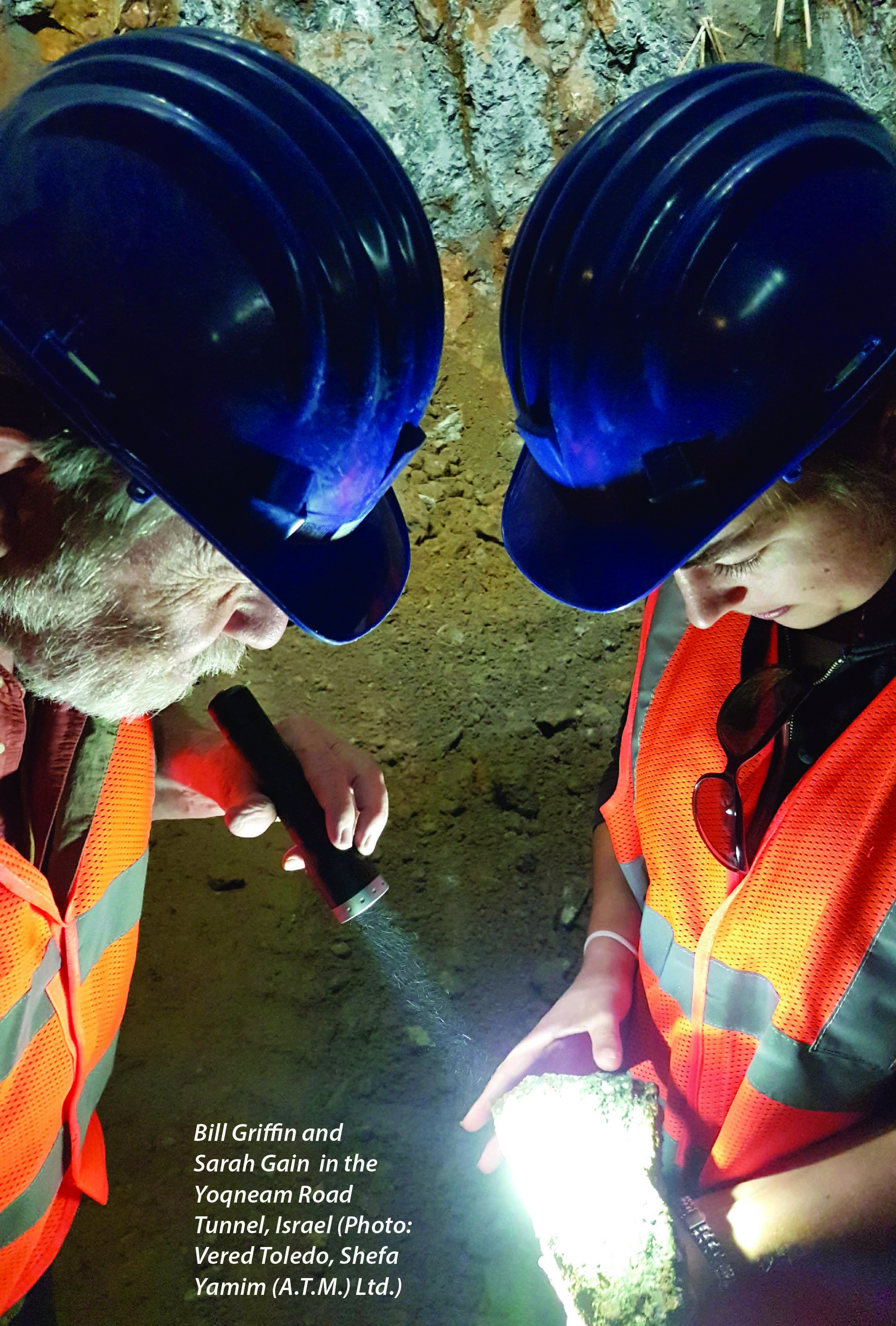
Dr John Ward, an expert on alluvial deposits of diamonds and other commodities, took the group into the field at Akko. His wonderful ability to visualise and explain landscape evolution and geomorphology really gave new insights into the nature of the deposits under exploration. New tuff localities were sampled and the group were able to access a new road tunnel under construction, just as it was exposing the innards of one of the Cretaceous volcanoes that carry the sapphire, ruby, hibonite, moissanite and one of the main research targets, the remarkable Carmel Sapphire™. Shefa Yamim is now processing a bulk sample from this tunnel face. After the conference, Bill and Sue held discussions and seminars at the Hebrew University of Jerusalem. Later in the year Bill Grifin contributed a video interview explaining the science of the mineral assemblages, which became part of Shefa Yamim’s highly successful launch on the London Stock Exchange. - CCFS had a very high profile at the Goldschmidt Conference in Paris in August 2017. The many CCFS presentations included eight PhD, seven ECR and eighteen senior researcher orals, with several keynotes. CCFS researchers convened two sessions. One of these, Session 5e “Lithosphere evolution during subduction and collision” attracted an all-time record number of 88 abstract submissions. As a consequence, oral presentations for this extended over 2.5 days of the 5-day conference, with concurrent poster sessions.
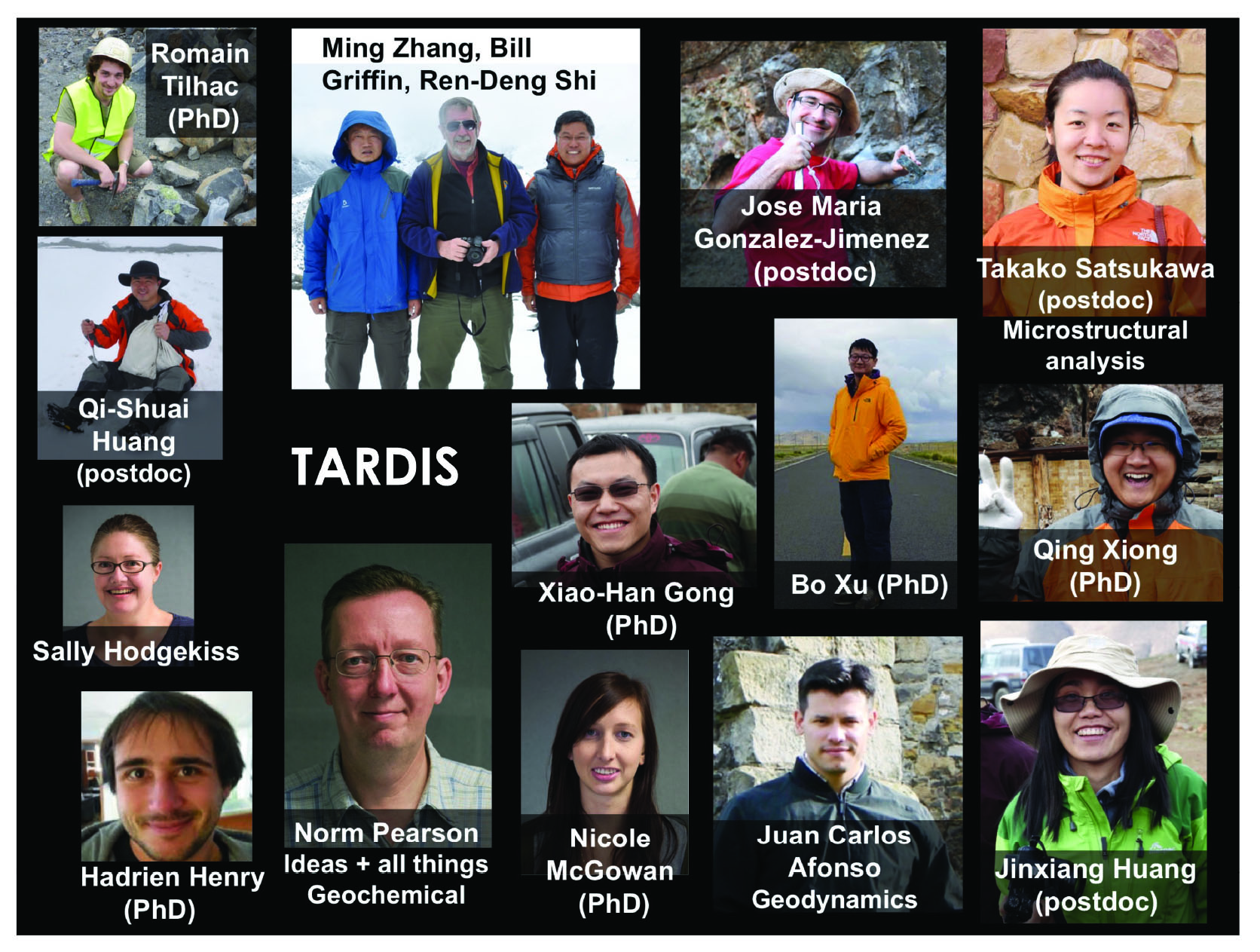

Other CCFS highlights included papers presenting the large body of work resulting from the TARDIS Flagship Program. Pictured above are many of the multi-national collaborations team involved in TARDIS. Serendipitously, the Geochemical Perspectives issue (Volume 3, Number 2) containing Mathieu Chassé’s paper on “Scandium speciation in a world-class lateritic deposit” linking mantle garnets with Sc deposits formed by lateritic weathering) was distributed as part of the conference material. Mathieu’s paper was, at that time, the 5th most downloaded paper (over 3,300) in the past year for Geochemical Perspectives.

- The UNESCO-IUGS IGCP Project 648, Supercontinent cycles and global geodynamics continued in 2017. The project brings together a diverse range of geoscience expertise from around the world, including three CCFS CIs, to explore the occurrence and evolution history of supercontinents through time and construct global databases of geotectonics, mineral deposits and the occurrences of past mantle plume events. Zheng-Xiang Li organised and co-conducted the first IGCP 648 Database Workshops in Beijing, China, (24 February 2017), a two-day workshop examining how to establish the East Asia part of the IGCP 648 geotectonic and mineral deposit database using the existing 1:2.5 million and 1:5 million digital geological maps. An equally successful database workshop was conducted on 9-10 June 2017 in Townsville, Queensland, Australia, prior to the Rodinia 2017 conference. See http://geodynamics.curtin.edu.au/igcp-648-china-national-working-group-kick-started-compilation-asian-database/.
- CCFS has collaborated with the ion-microprobe laboratories at IGG-CAS (Dr Li Xianhua) to develop standards for the analysis of oxygen isotopes in Cr-bearing and Ca-rich garnets; this was necessary because the SIMS technique is sensitive to matrix effects arising from compositional differences between sample and standard. Another important outcome was the development of a synthetic standard SiC, which now enables the in situ analysis of both Si isotopes (a world-first) and C isotopes in natural SiC. This development was supported by Dr Paul Savage and Dr Anita Andrews, who analysed the Si isotopes and C isotopes, respectively, of the standard material by ‘conventional’ means. A survey of SiC from Russian kimberlites, Tibetan ophiolites and Israeli basalts has been completed and will soon be published. In a new project, IGG-CAS and CCFS are developing standards that will allow the in situ analysis of Ti isotopes in a variety of matrices, to investigate the isotopic fractionation of Ti as a function of oxygen fugacity.
- Dr Yongjun Lu continued his collaboration with the Chinese Academy of Geological Sciences (CAGS) and the China University of Geosciences in Beijing (CUGB) to investigate the porphyry copper systems in the Tibetan plateau and surrounding region. Yongjun was Invited to visit CAGS by Professor Zhiming Yang. He was also invited to give presentations at Peking University (PKU) and CUGB.
- Prof Zheng-Xiang Li continued as Co-director of the Australia-China Joint Research Centre for Tectonics and Earth Resources (ACTER). ACTER is a joint research centre led by the Institute for Geoscience Research at Curtin University, and the Institute of Geology and Geophysics of the Chinese Academy of Sciences, with participants from collaborating institutions from the two countries. CET, TIGeR and GEMOC are all Key Australian Partner Institutions (http://tectonics.curtin.edu. au/). ACTER aims to facilitate: collaborative research and research training in geotectonics and mineral and hydrocarbon resources, the exchange of staff and joint supervision of research students, shared access to analytical facilities, the organisation of joint conferences and annual focused field-based workshops and the exchange of academic materials and information.
The 2017 ACTER annual field workshop “Tectonics of the Lachlan Fold Belt and granite petrogenesis” was held on the 23-29 October 2017. The event was led by Professor Bill Collins (Curtin). Among the 42 attendees were representatives from international institutions including the Chinese Academy of Sciences (CAS), Guangzhou Institute of Geochemistry, the Chinese Academy of Geological Sciences, Sun Yat-Sen University, Peking University, Chang’an University and Zhejiang University. See http://geodynamics.curtin.edu.au/2017-acter-field-symposium-23-29-october-2017/. The 2018 ACTER Field Symposium “Tectonic evolution of the North Qilian Mountains: From Paleozoic oceanic subduction to Cenozoic plateau expansion” will be held along the Qilian Mountains, Gansu province, China from the 25th August to the 2nd September 2018. The field trip will focus on (1) the Early Paleozoic North Qilian Orogen featuring oceanic subduction and arc-continent collision, and (2) the Cenozoic fold-and-thrust belt in relation to the uplift and expansion of the Tibetan Plateau. For more information see http://tectonics.curtin.edu.au/acter-2018-field-symposium/.
http://tectonics.curtin.edu.au/acter-2018-field-symposium/.
- CCFS is a partner in, and Professor Sue O’Reilly a co-leader of, the new 2018-2022 international IGCP-Project 662 “Orogenic Architecture and Crustal Growth from Accretion to Collision”, led by Prof Tao Wang (CAGS in Beijing) and sponsored by UNESCO and IUGS. More than 13 developing and developed countries /regions will be involved, enhancing the cooperation of scientists from diverse social and political environments.
The main objectives of this proposal are: (1) to characterise differences in crustal formation and architecture between accretionary and collisional orogens; (2) to establish the relative proportions of juvenile vs. reworked crust; and (3) to better understand the role of orogenic compositions on metallogenesis. Participants plan to conduct comparative studies on the Central Asian Orogenic Belt (CAOB), the world’s largest Phanerozoic accretionary orogeny, and the Tethyan orogenic belt, the world’s youngest extensive collisional and metallogenic belt, as well as other composite orogens.
The first IGCP-662 workshop and field excursion will be held on 16-22 September 2018 in China. A 5-day pre-workshop field discussion and training course will investigate ophiolites, granitoids, tectonics and crustal growth in the Beishan area of NW China. This will be followed by a one day work-shop at the Chinese Academy of Geological Sciences (CAGS), Beijing (21 September) and a day of post-workshop training on 22 September.
- CCFS fosters many of its international links through visits by collaborators to undertake defined short- term projects, or short- term visits to give lectures and seminar sessions.
- CCFS provides funds to international visitors who will add value to CCFS programs and contribute to the high visibility of research in the Centre. In 2017, CCFS co-sponsored Hadyn Williams Fellow, Professor Brendan Murphy (St. Francis Xavier University, Nova Scotia, Canada). During his very productive visit, Professor Brendan Murphy collaborated with members of Flagship Program 5 on a large number of co-authored papers. He also conducted a series of workshops and public lectures:
- What makes a research leader? Empowering the next generation of Research Leaders
- How to publish in geological journals (postgraduate students and ECRs)
- Why do Geology?: Orientation (incoming 1st-year students)
- Hadyn Williams Lecture: Why leprechauns know how mountains are built (May 2017)
- Geological Society of Western Australia: Mantle plumes, Mountains and Mineralisation (February 2017)
- University of Western Australia: Mantle plumes, Mountains and Mineralisation (March 2017)
- Curtin University: Ophiolite Complexes: a woofer in tweeter’s clothing? (March 2017)
- The supercontinent cycle. Earth Dynamics Research Group, Mandurah, Western Australia
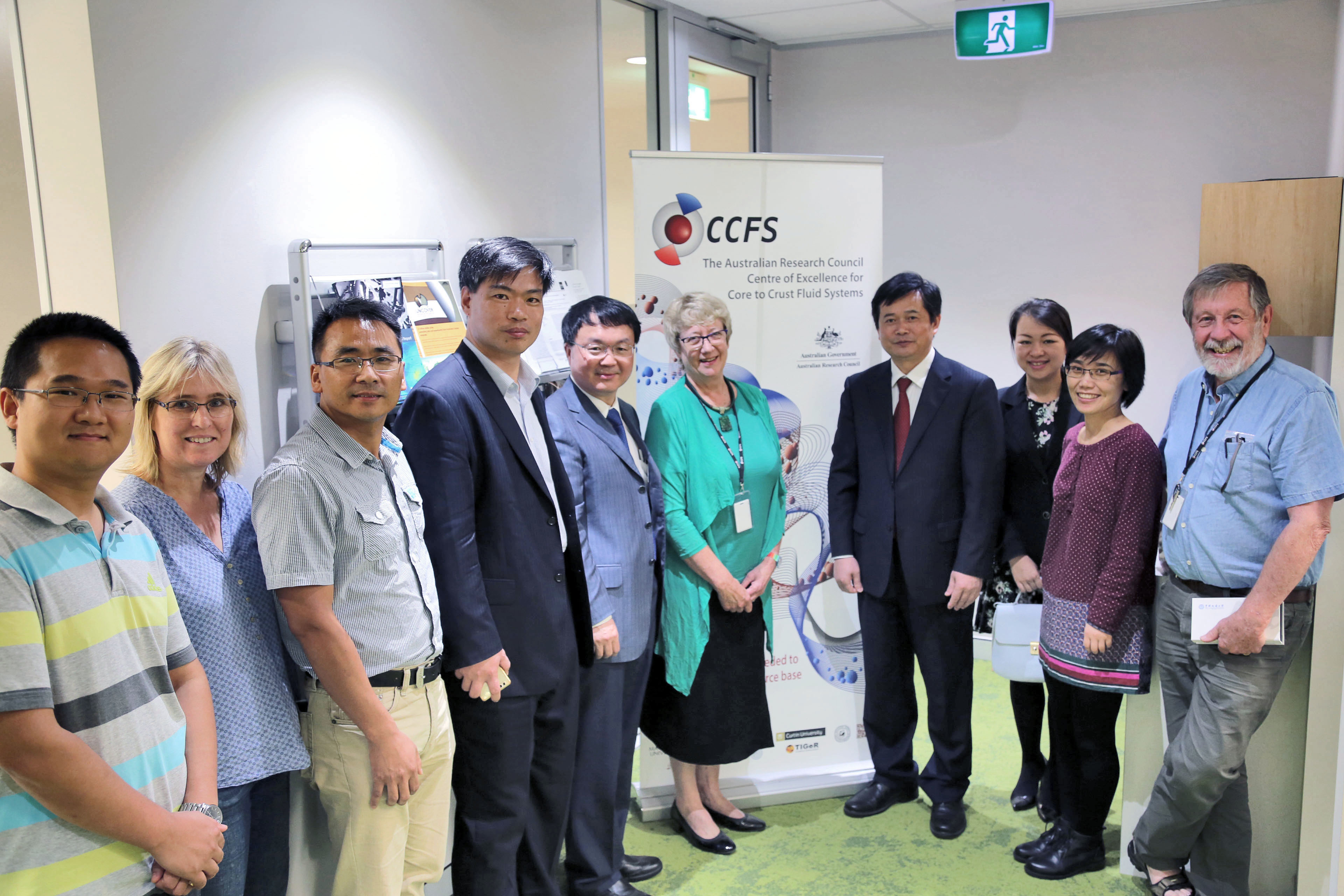
China University of Geosciences, Beijing
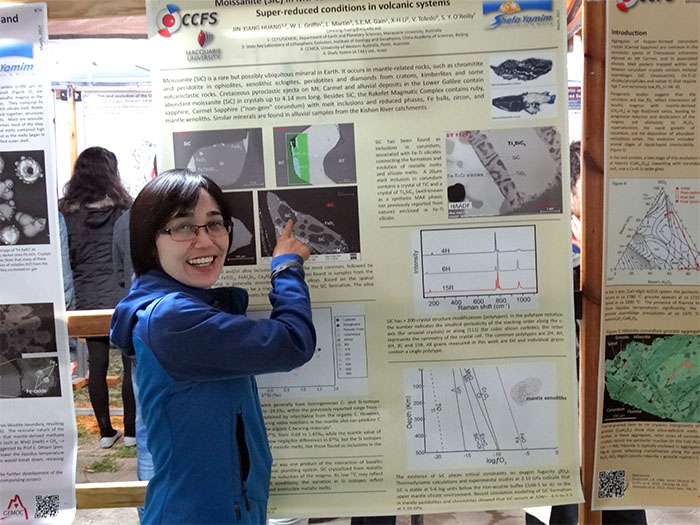
Jinxiang demonstrates her poster on the origins of moissanite (SiC) at the meeting of the Israel Geological Society meeting.
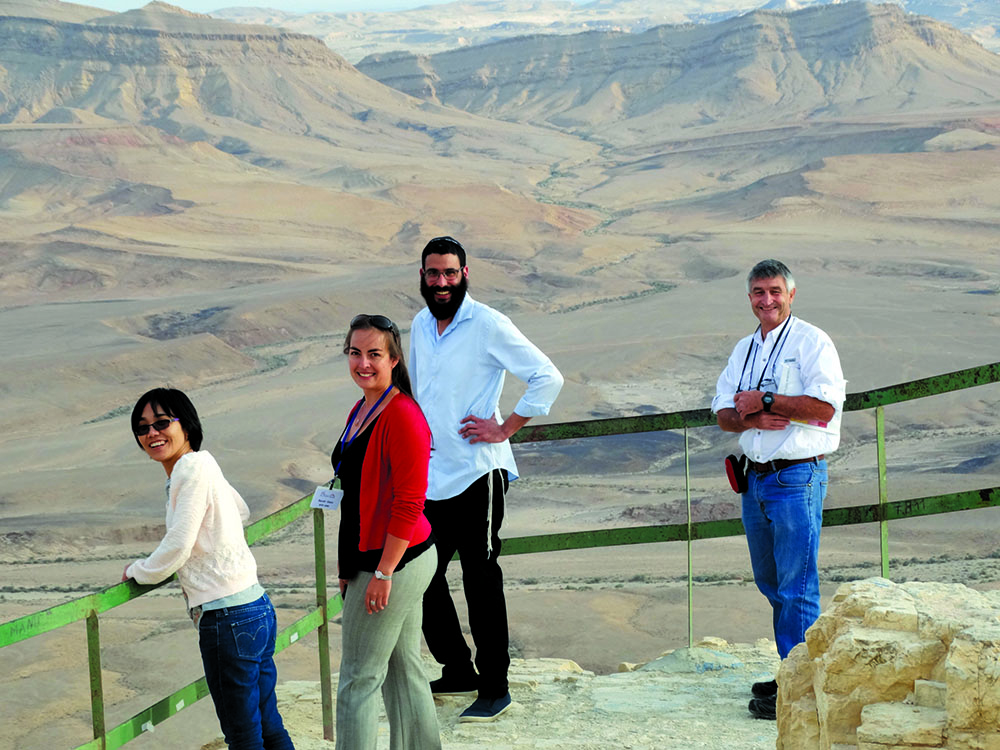
Jinxiang, Sarah, Mendy Taub and John Ward take in the spectacular scenery at Mitzpe Ramon in the Negev Desert, Israel.
The 2018 IGCP 648 Field Symposium “From Rodinia to Pangea: Geodynamics, Life and Climate” will visit the Yichang, Three Gorges Region, China on the 1-9 November 2018. For more information visit http://geodynamics.curtin.edu.au/igcp-648- 2018-field-symposium/.
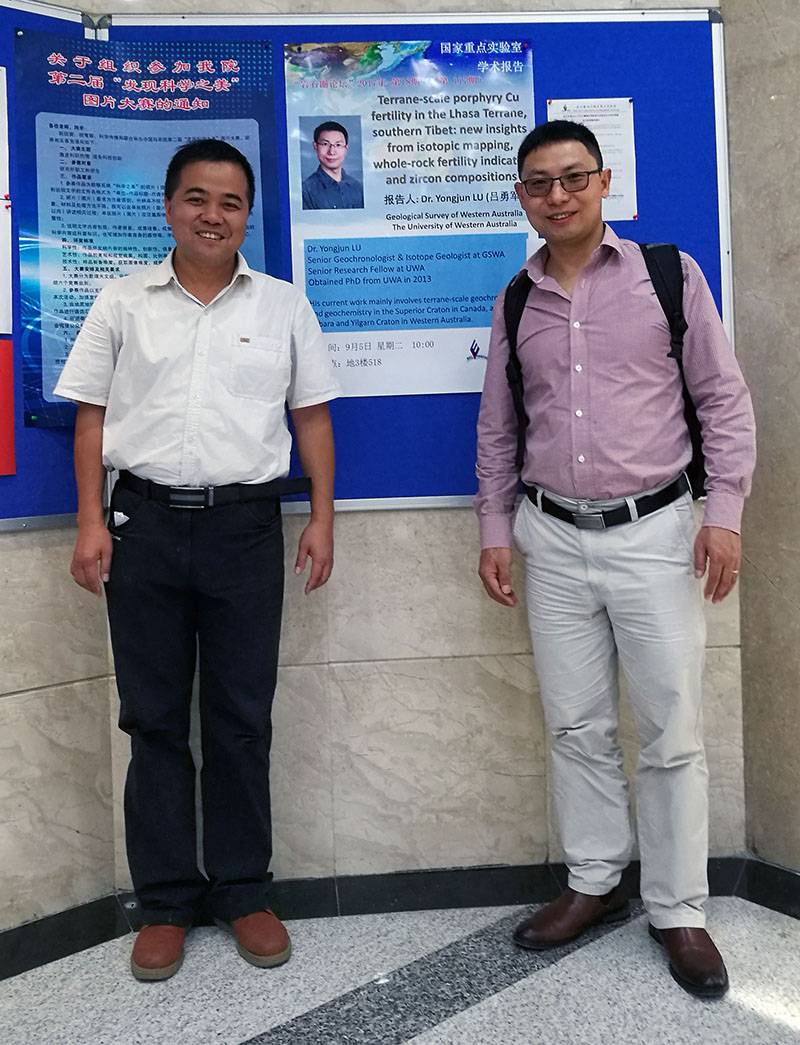

The 2017 ACTER annual field workshop (Photos: Zheng-Xiang Li).

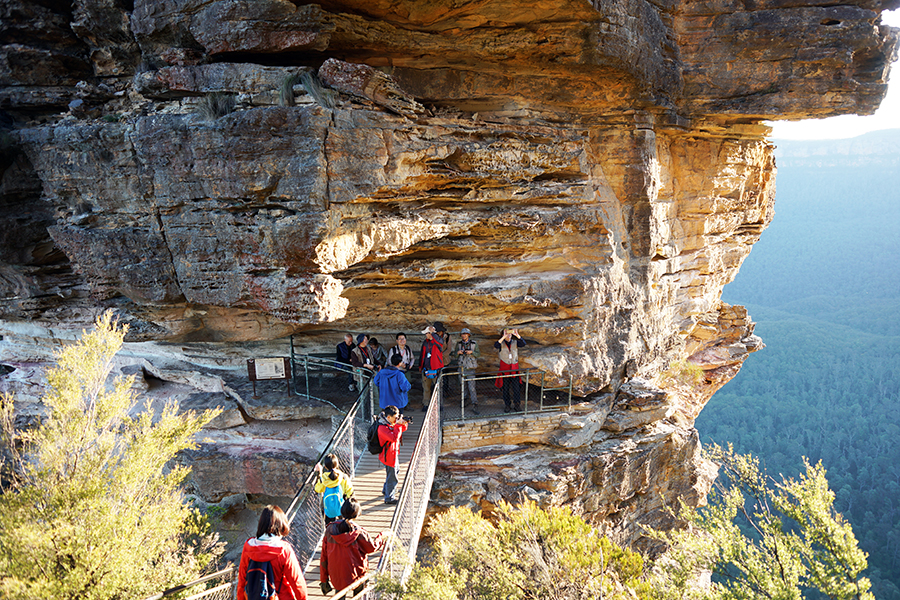
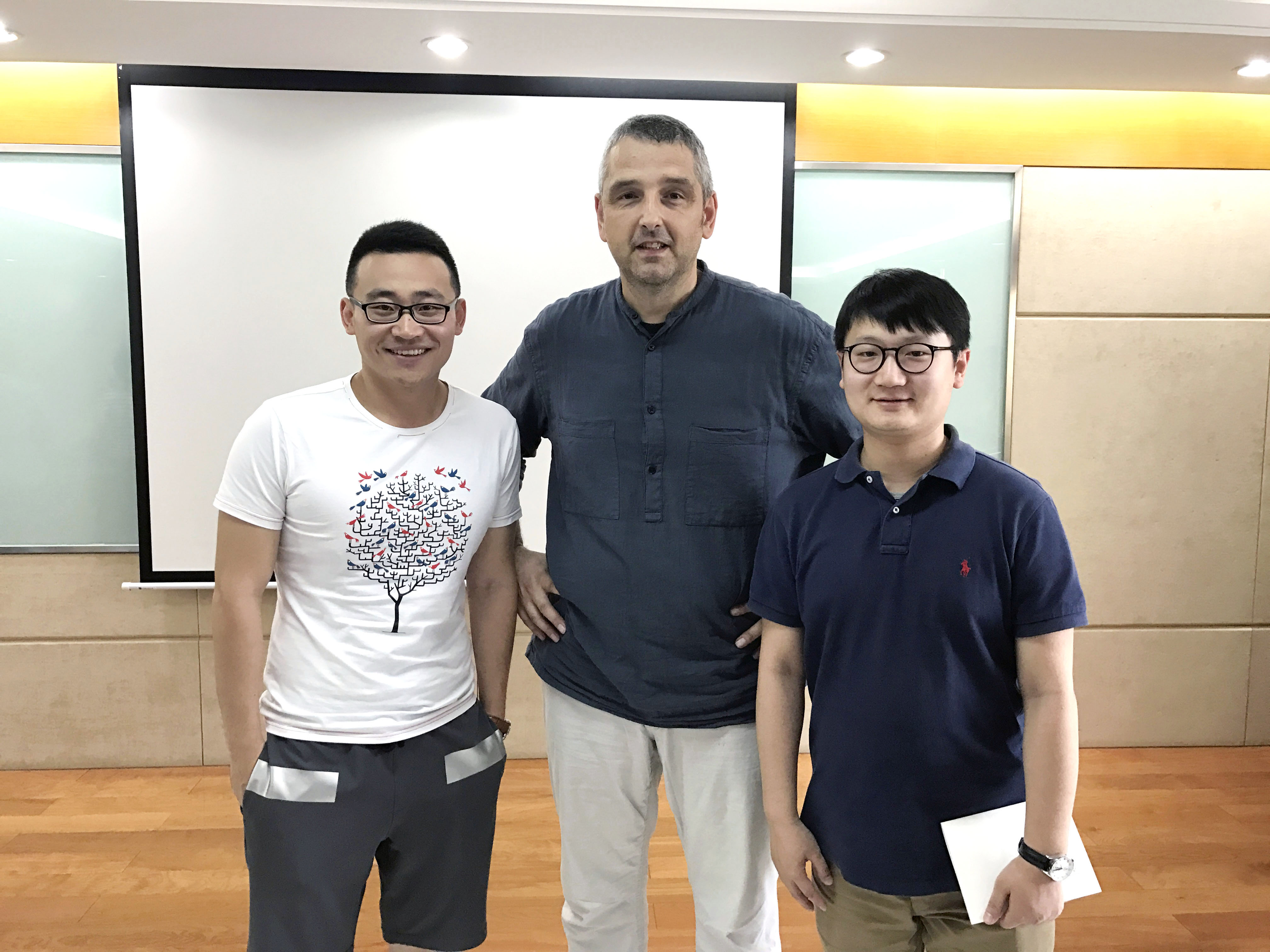
CCFS PhD graduate Yu Wang and PhD candidate Bo Xu attended a presentation of Associate Professor Dejan Prelević (University of Belgrade) in Beijing related to European ultrapotassic rocks. Dejan is a long-time CCFS Collaborator.
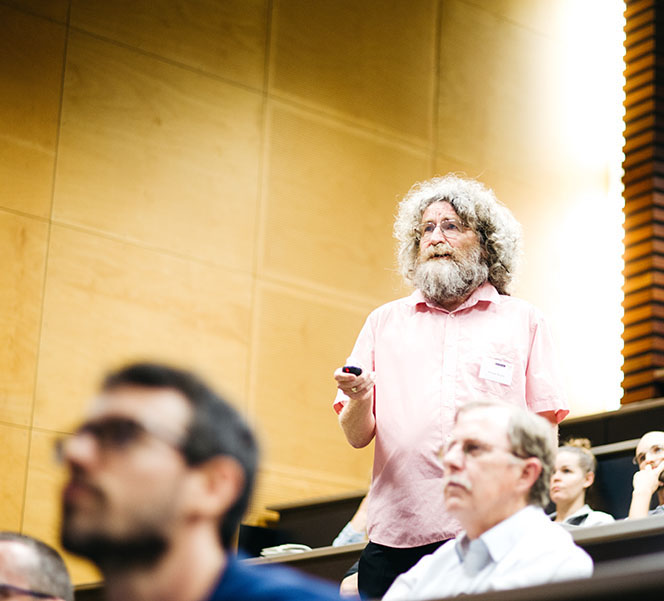
CCFS co-sponsored Hadyn Williams Fellow, Professor Brendan Murphy (St. Francis Xavier University, Nova Scotia, Canada)
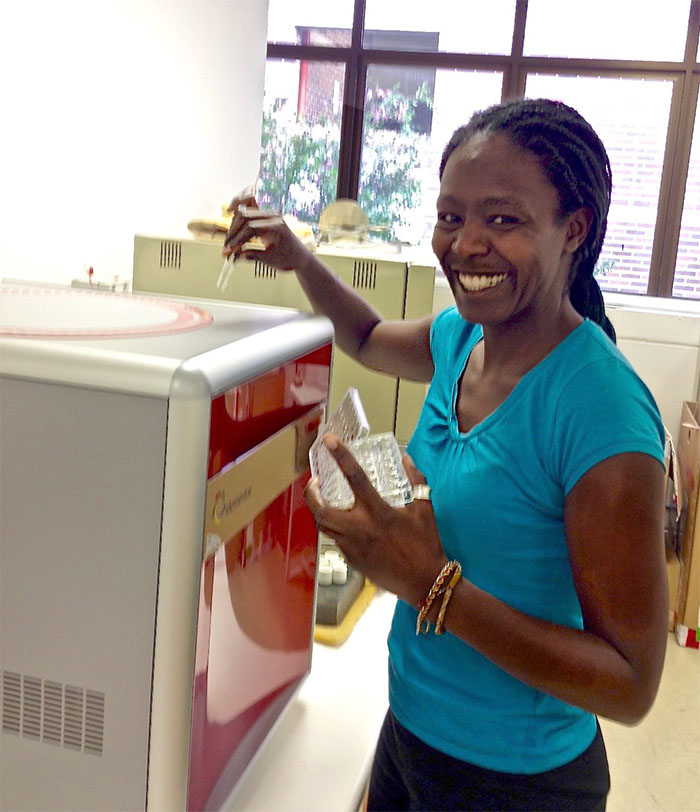
Dr Fatma Kourim, Institute of Earth Science, Academia Sinica, Taiwan.
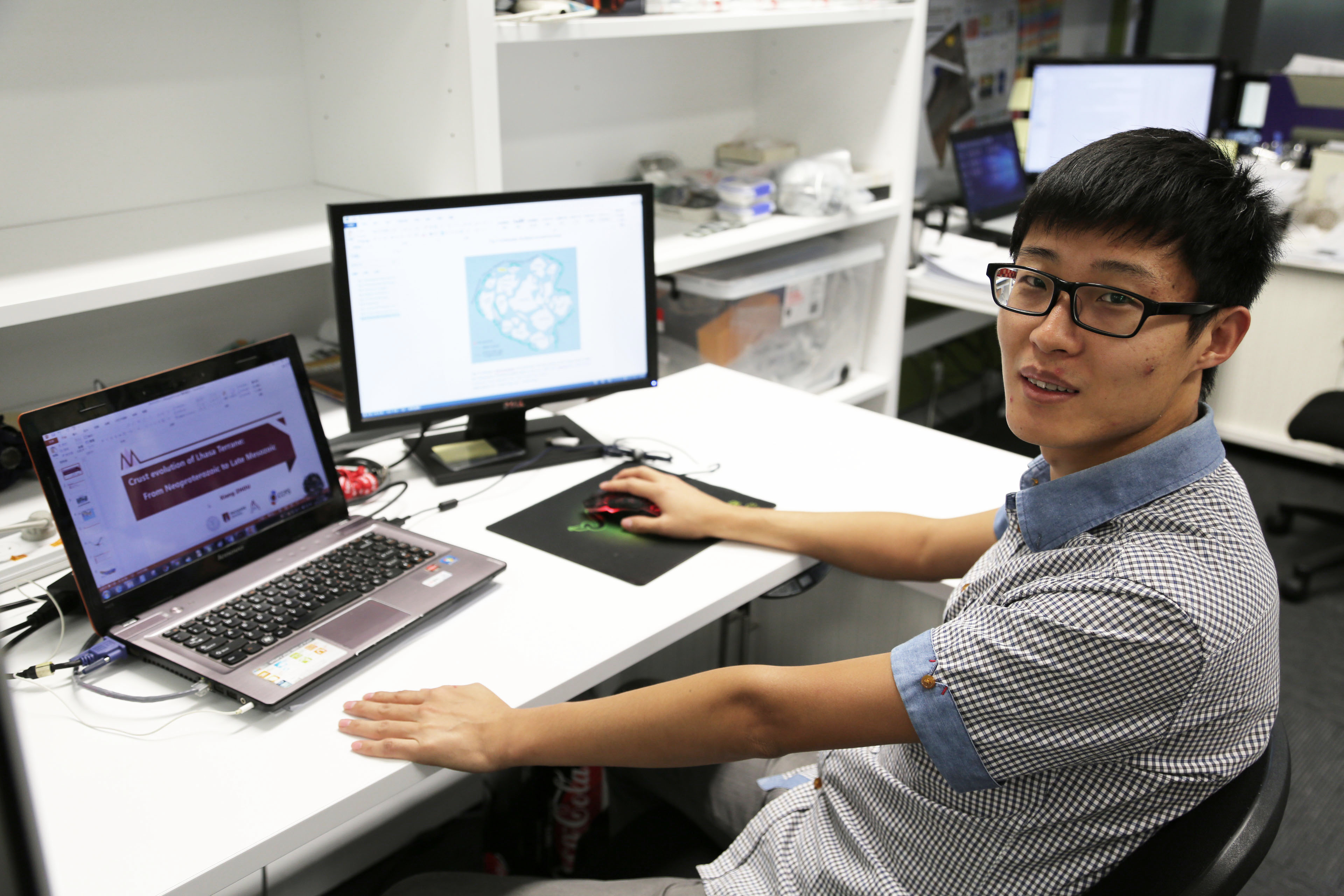
Xiang Zhou, China University of Geosciences, Wuhan.
CCFS fosters many of its international links through visits by collaborators to undertake defined short-term projects, or
short-term visits to give lectures and seminar sessions.
International visitors are listed in Appendix 7.

 ARC Centre of Excellence for Core to Crust Fluid Systems
ARC Centre of Excellence for Core to Crust Fluid Systems